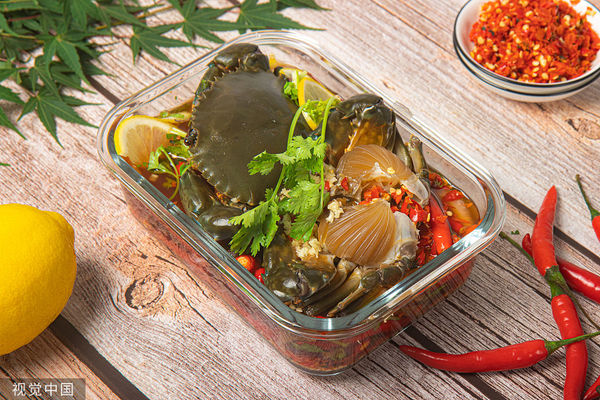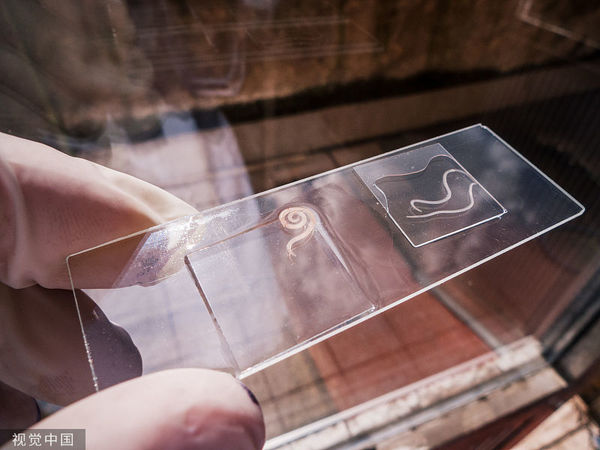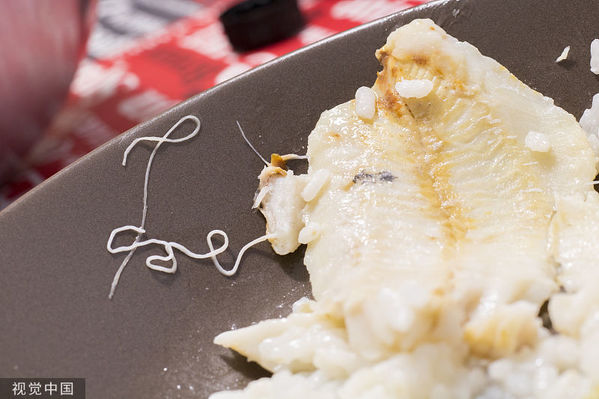Is the raw pickled little seafood, which is a food circle, "poison" or "delicacy"
"Steaming on the top and cooking on the bottom" is the hottest time of the year. It seems that only ice and cold things can last, and even meals just want to eat ice. A delicious food that has been brushed frequently recently — — Chaoshan raw pickled, have you eaten it?
The method of raw pickling in Chaoshan is as follows: clean live shrimp, crab and shellfish, put them on a plate, add seasonings such as onion, ginger and cooking wine, and put them in the refrigerator.Freeze for hours or a day or two.A "raw salting" that is said to be addictive is ready.
The combination of seafood and raw salting has to be reminiscent of "parasites", and fish, crabs, shrimps and shellfish in seawater may carry parasites — — Anisodes. In this issue, we will take a look at the knowledge about anisakis..

What are the symptoms of infection with anisakis?
The general clinical manifestations of infection caused by anisakis nematodes are as followsGastrointestinal symptoms, or allergic reactions caused by repeated infections.After eating food containing live third-stage larvae of Anisodes, clinical symptoms usually appear in 1-12 hours.It is characterized by abdominal pain, nausea, vomiting, hematemesis, general fatigue, abnormal stool and other symptoms.In severe cases, larvae can penetrate the stomach or intestinal wall and migrate to peritoneum, pleural cavity, mesentery, liver, pancreas or ovary. Generally, the disease is self-healing, and the acute symptoms will disappear within a few days, but if left untreated, it can cause chronic ulcer-like symptoms, which last for weeks or even months.
Insects and their secretions can also cause strong allergic reactions, and the epitopes are urticaria, rubella, edema, even respiratory disorders, anaphylactic shock and so on.
Up to now, 12 kinds of simple anisakis allergens (Ani s1- Ani s12) have been reported, but only the first 9 allergens have been clearly identified and classified. Seven (Ani s1, Ani s4, Ani s5, Ani s6, Ani s7, Ani s8, Ani s9) are excretory and secretory allergens, and two (Ani s1, Ani s3) are allergens of the insect itself. Ani s1, Ani s2, Ani s3 and Ani s7 are the main allergens, and Ani s4, Ani s5, Ani s6, Ani s8, Ani s9 and Ani s10 are the secondary allergens.85% of people allergic to ANODONAS contain Ani s1-specific IgE. It is generally believed that,General anisakis allergy is caused by infection with live anisakis.However, it cannot be ruled out that contact with heat-resistant antigens or dead larvae may cause allergies.

Easily misdiagnosed? How to diagnose?
For the diagnosis of suspected cases,First of all, because of asking patients whether they have eaten raw and mature seafood.According to biochemical indexes and signs, it is different from other gastrointestinal diseases (acute appendicitis, intestinal obstruction, etc.). The diagnosis was assisted by endoscope and X-ray.
Fiberoptic endoscope is the most effective diagnostic method for the disease of Heterotopic Nematodes in esophagus and stomach. Using fiberoptic endoscope, we can directly find worms or find pathological changes such as erosion and edema on mucous membrane, and confirm them. At the same time, we can directly take out worms for treatment.
The X-ray signs of gastric anisakis disease are mainly longitudinal gastric wall wrinkling and swelling, and sometimes the larvae themselves are linear shadows. For anisakis enterobiasis, the X-ray sign of intestine is segmented after barium meal, and serrated or short rod-shaped shadows can be seen in the affected part, and the intestine above the affected part has strong expansion, in which the retained barium can be seen with granular shadows.

Ultrasound images can also be used to assist in the diagnosis of intestinal anisakiasis.When larvae cannot be found in the stomach and small intestine, immunological diagnostic techniques can be used to assist in the diagnosis of anisakis. Detection of IgG, IgA or IgE antibodies in the serum of suspected cases with larval excretory and secretory antigens, worm antigens or Anis1 allergens can assist in the diagnosis of recent and past infections, and has the advantages of high efficiency and strong specificity.
In the process of diagnosis and treatment,Anisodomy is easily misdiagnosed as acute appendicitis, intestinal tumor, localized enteritis, intestinal diverticulitis, etc. It is difficult to get worms from the intestine, and the diagnosis is made by X-ray fluoroscopy and immunological blood clearing. Generally, albendazole conservative treatment combined with anti-inflammatory drugs is adopted.
There is no specific therapeutic drug for anisakis, and prevention is the key.
There is no specific treatment for anisakis, and the most effective treatment is to take out the worm as soon as possible.If the worm can’t be taken out, conservative treatment should be adopted, and observation should be strengthened while resisting infection and allergy. When the condition is serious, surgery should be performed to remove the worm in time to avoid local blockage.

We should adhere to the principle of giving priority to prevention for anisakis,Strengthen publicity and education for consumers and inform them of the dangers of eating immature processed seafood.Processing this kind of food should be cooked thoroughly to reduce raw seafood and fresh water products.Reduce food safety risks. It is advocated that related food enterprises and restaurants should freeze seafood before processing and selling it. Freezing can not only kill parasites in seafood, but also kill pathogenic Vibrio. The European Union stipulates that raw seafood must be frozen at -20℃ for at least 24 hours, and the US FDA requires that seafood eaten without being heated above 60℃ must be frozen at-35℃ for 15 hours or stored at -23℃ for at least 168 hours (7 days).
Focus on:Avoiding eating raw or half-baked marine fish is the primary preventive method, and the fish should be heated and cooked before eating. Anisodes can all die after being frozen at -20℃ for 24 hours.(Article source: "Jiangbin Hospital, Affiliated Hospital of Jiangsu University" WeChat WeChat official account)